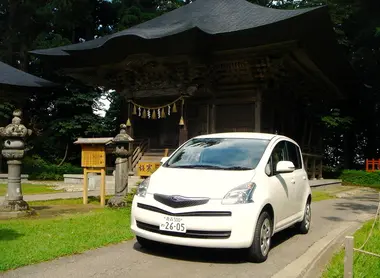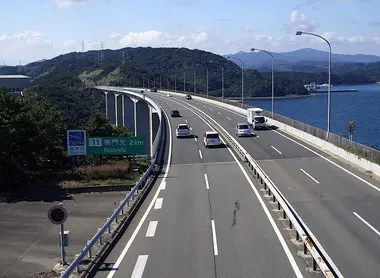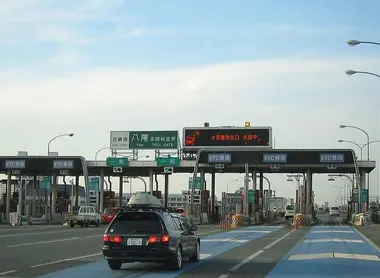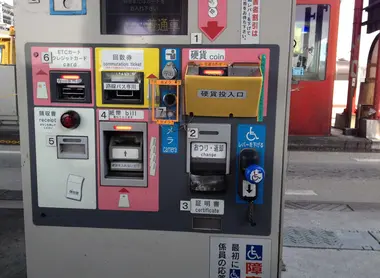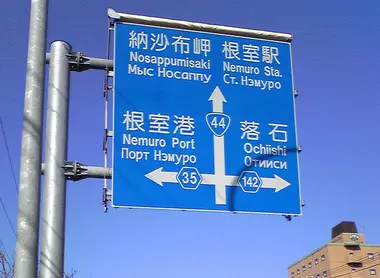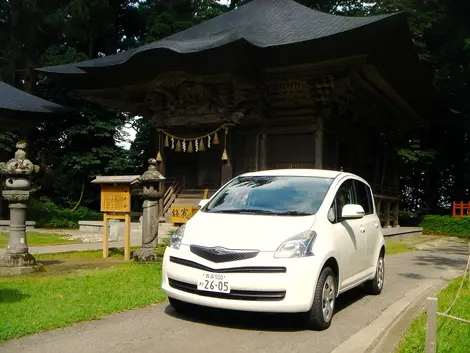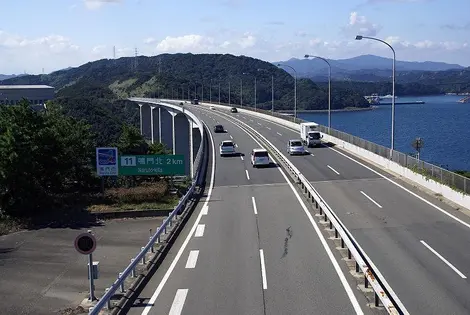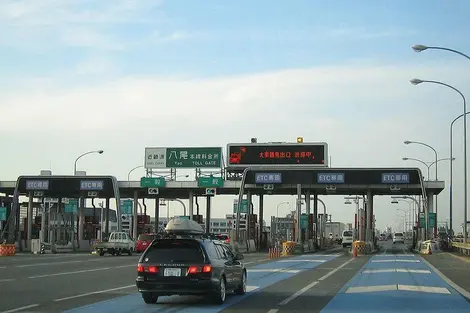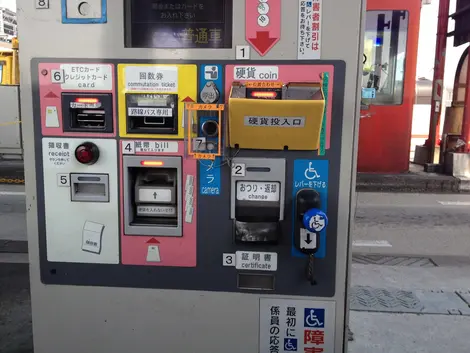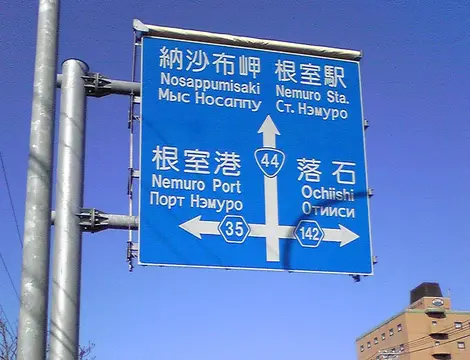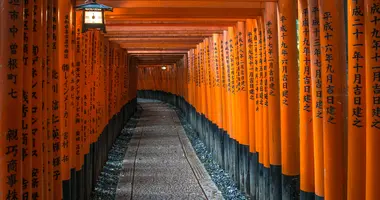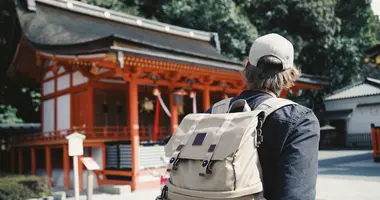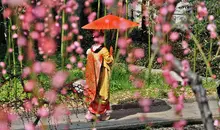Driving in Japan: A complete guide for travelers
- Published on : 22/08/2020
- by : G.L.
- Youtube
10 things to know for zen driving in Japan
Driving in Japan may seem intimidating at first glance, but it's often the best way to explore certain regions inaccessible by train. For French travelers, the main peculiarity is that the international license is not recognized, as Japan has not signed the 1968 Vienna Convention. Find out everything you need to know about driving in the Land of the Rising Sun, from administrative formalities to the specifics of Japanese driving.
Administrative formalities: obtaining an official translation of your license
The first essential step to driving in Japan is to obtain an official translation of your French driver's license. Unlike other countries, Japan does not recognize the international license for French drivers. This translation must be done by the Japan Automobile Federation (JAF) or by an approved travel agency.
You can do this directly in Japan at a JAF office, but this will waste precious time during your stay. The most practical solution is to use a Japanese driver's license translation service before you leave. The translation obtained is valid for the same length of time as the original, provided it has not been altered.
To drive legally in Japan, you'll need to carry three essential documents with you at all times: your original driver's license, its Certified Driver's License Translation, and your passport.
Car rental: where and how to rent a car in Japan
Numerous rental agencies are present throughout Japan, with varying rates and services. Major brands such as Toyota Rent a Car, Budget, Nippon Rent-a-Car or Niconico Rent a Car offer services in English and sometimes French, making it easy for tourists to get around.
For a small entry-level city car, expect to pay around 6,500 yen per day (around €40). For a hybrid sedan, rates start at around 10,500 yen a day (€65). Almost all cars in Japan are equipped with automatic gearboxes, making it much easier to adapt to left-hand drive.
When renting, ask for an English-language GPS - it's usually an option available at no extra cost. Japanese GPS units have a very practical feature: they allow you to locate a destination simply by entering its telephone number. You should also check whether your car is equipped with the ETC (Electronic Toll Collection) system for motorway tolls, so that you don't have to stop at every barrier.
Japanese Highway Code: the main differences with France
Japan's highway code is different from that of France in several respects, although many aspects are similar. Road signs are generally recognizable, and main directions are indicated in the Latin alphabet in addition to Japanese characters.
Speed is strictly limited in Japan: 40 km/h in town, 60 to 80 km/h on secondary roads, and 80 to 100 km/h on freeways. In practice, the Japanese often drive 10 to 20 km/h over the speed limit, but beware of police checks and speed cameras.
Among the specific rules to be aware of, note that in Japan, stop signs have an inverted triangular shape with the inscription 「止まれ」("tomare") and that it is imperative to come to a complete stop. Traffic lights are often placed after the crossroads, facing the driver, and not before as in France.
Pedestrians have absolute priority on the road - be particularly vigilant at crosswalks, even when your traffic light is green.
Driving on the left: tips for adapting quickly
Driving on the left in Japan has its origins in feudal times, when samurai carried their swords on the left side of their bodies. This tradition continued and was reinforced by British influence when Japan's first railroads were built in the 19th century.
Here are a few tips to help you quickly adapt to this reverse driving style:
- Take advantage of the automatic gearboxes found in almost all rental cars - this allows you to concentrate solely on the road
- Remember that turn signals and windscreen wipers are reversed compared with French cars
- Drive carefully for the first few days, keeping well to the left and taking time to observe the traffic
- Use this simple trick: the driver should always be on the middle side of the road
- Be particularly vigilant at junctions and on bends, where reflexes can play tricks
Adapting to driving on the left usually takes just a few hours. The absence of traffic circles in Japan and the systematic presence of traffic lights or stops at intersections greatly simplify the transition.
Freeways, tolls and parking: practical information
Japanese freeways(indicated by green signs, unlike in France) are in excellent condition, well maintained and safe. However, they are all subject to relatively high tolls. For a trip from Tokyo-Kyoto, expect to pay around 10,000 yen (€60) in tolls.
The ETC (Electronic Toll Collection) system allows you to pass through toll gates without stopping. Most rental agencies offer to equip their vehicles with an ETC box, sometimes for a small extra charge (around 300 yen for the entire rental period). Toll charges are then recorded and paid upon return of the vehicle.
Japanese freeway service areas offer excellent services: quality restaurants at reasonable prices, stores, impeccable toilets, and sometimes even showers and tourist attractions. They're great places to take a break.
Parking is often the major difficulty for drivers in Japan. In the cities, spaces are scarce and parking lots are very expensive: count between 100 and 500 yen for an hour, and up to 2,000 yen for a night. Most parking lots have an automatic wheel-lock system, with a bar that lifts out from under the vehicle. To free your car, you must pay at the machine corresponding to your parking space.
Specific rules to be aware of: alcohol, telephone and level crossings
Japan has zero tolerance for drinking and driving. The permitted blood alcohol level is 0%, and penalties are extremely severe: fines of up to one million yen and imprisonment. Passengers who allow an alcoholic to drive are also liable to fines.
Using a cell phone while driving is strictly forbidden, even when stationary. If you need to make a call or consult your GPS, park in an appropriate place.
A Japanese peculiarity concerns level crossings: even when the gates are open and the light is green, you must come to a complete stop before crossing the tracks, just as you would at a stop sign. This rule is designed to prevent accidents with trains.
Seatbelts must be worn by all passengers, front and rear. Unlike in France, the Japanese make very little use of the horn and headlights - these behaviors can be perceived as aggressive.
The best regions to explore by car in Japan
While major cities such as Tokyo and Osaka are well served by public transport, certain regions of Japan lend themselves particularly well to exploration by car:
- Hokkaido: the large northern island offers spectacular natural landscapes, from the lavender fields of Furano to the blue pond of Biei and Daisetsuzan National Park.
- The Japanese Alps: discover traditional villages such as Tsumago and Magome, ancient stops on the historic Nakasendo road linking Tokyo and Kyoto.
- Noto Peninsula: on the coast of the Sea of Japan, explore Wajima and its morning market, the Sojiji temple and Chirihama beach, where you can drive right onto the sand.
- Wakayama: visit the Kumano shrines, a UNESCO World Heritage site, and the thousand-year-old hot springs of Yunomine.
- Shikoku: the smallest of Japan's four main islands is home to treasures such as the Iya Valley, with its vine-covered bridges and mountainous landscapes.
- Kyushu: explore the spa town of Yufuin, the mystical village of Takachiho with its impressive gorges, or the island of Yakushima and its thousand-year-old cedars.
- Okinawa: the subtropical archipelago of southern Japan, with its white sandy beaches and crystal-clear waters, is best explored by car.
The car gives you access to places untouched by mass tourism, allowing you to stop and admire the scenery as you please. To help you plan your journey, the excellent Navitime website (available in Japanese only, but searchable in Latin characters) will help you estimate journey times and toll costs.
Driving in Japan requires some adaptation, but offers incomparable freedom to discover the country in depth. With the right preparation and a few precautions, your Japanese road trip will undoubtedly be one of the most memorable experiences of your trip. Don't forget to bring your original license and its official translation, and explore Everything you need to travel by train in Japan! to complete your mobility experience on the archipelago.
